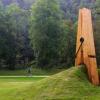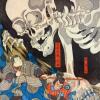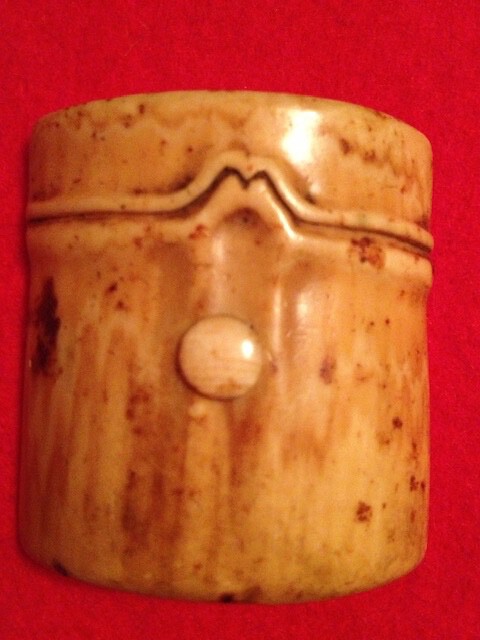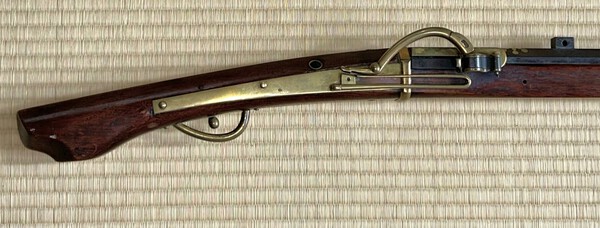-
Posts
14,217 -
Joined
-
Last visited
-
Days Won
270
Bugyotsuji last won the day on December 23
Bugyotsuji had the most liked content!
About Bugyotsuji

- Currently Viewing Topic: Possible WW2 Sword
Profile Information
-
Gender
Male
-
Location:
Japan
-
Interests
Japanese history, Tanegashima, Nihonto, Netsuke, Katchu, fast cars, J-E-J translation
Profile Fields
-
Name
Piers D
Recent Profile Visitors
The recent visitors block is disabled and is not being shown to other users.
Bugyotsuji's Achievements
-
Don’t have time to look at everything in detail but the inscription does not inspire confidence. 木元武夫 Kimoto Takeo is wrong for a swordsmith name. 元和 七年 is read Genna 7, toward the beginning of the Edo Period.
- 1 reply
-
- 1
-

-
Kane…(?) 兼
- 1 reply
-
- 2
-

-
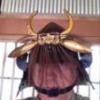
Itomaki Gata, (Vertical Spindle Shape Tsuba), Historical Examples ???
Bugyotsuji replied to Barrett Hiebert's topic in Tosogu
Reminds me of this ‘bamboo’ netsuke (made of ivory) with the Fushi joint in the design of Mt Fuji. I think this is a wordplay on Fushi and Fuji, talismanic, Fuji (不死 Fushi) meaning ‘eternal life’. -
-

Accessories for the Tanegashima
Bugyotsuji replied to Bugyotsuji's topic in Tanegashima / Teppo / Hinawajū
Version A and Version B. There was a small random plug attached to the original flask string, and although nothing great to look at, it seemed that someone had thought it special enough to keep it attached. Possibly the original cap had split? I decided to use the old top eye-loop plug for Version B, fitting it into a ‘new’ section of dried bamboo. The old strings I kept too, although they are quite frayed and broken. -
John, antler like yours, or bone, we will see nowadays more often since ivory has been largely legislated away. Just plain and smooth on the back? A sweet thing. These were designed for the width of an average obi, fitting or locking behind the obi, with the decoration facing outwards. Your comment about ‘swinging’ makes sense and may account for the relative shortness of time that these were in fashion. I have two or three examples, ranging from crude to fairly good, but I was blown away recently by a beautiful one for around $8,000 in a Kyoto antiques fair!
-

Edo Period Corner Part II
Bugyotsuji replied to estcrh's topic in General Nihonto Related Discussion
-
Somehow I have lost the registration card for a precious wakizashi. In order to get a new one issued there are some hoops through which one has to jump. 1. Contact the education board of the prefecture where the original was issued. Tokyo in my case. Pray you have a copy of the original. Pray you originally registered yourself as the new owner within 20 days of purchase as the law stipulates. They send you the forms to fill out, which you send back to them. 2. In theory they then contact the education board where you live and request a sai-hakkō be issued at the next sitting of their committee, whenever, wherever. 3. You bring the blade at the agreed place and time for inspection, which usually takes a full morning, pay your money for a new card. ¥6,000(?). In order to get past step 1 above, however, they have requested that I go to Police Headquarters and file an official ‘lost’ notice and collect a number code. So I went to the Police station and was advised over the phone by the authorities that if there is a possibility that it’s at home and I’ve misplaced it, in a sword bag or down the side of a drawer, then they cannot issue such paperwork. They would need to know that it got lost out and about, going to the Togishi for example, and I would have to state when I last saw it. I do not want to involve the Togishi in this as ultimately it’s my responsibility and not his. He told me does not have it and I believe him. Feeling stuck between two branches of government, I took the bull by the horns and went to Police HQ with all my paperwork and the forms from Tokyo, and begged them to help me out. Finally they have agreed to issue the vital number for me! Happy Christmas! This has taken a month so far since I first phoned the Tokyo Board of Education. Now I fill in all the paperwork and send it off to Tokyo for a new attempt at Step One above!
-
- 3
-

-

Accessories for the Tanegashima
Bugyotsuji replied to Bugyotsuji's topic in Tanegashima / Teppo / Hinawajū
Recently I came into possession of an odd assortment of flasks, of which two coarse powder flasks were ‘genuine’. One was missing its measuring cap, which should fit over the spout, with a little eye loop fixed above it. I spent three days making one and it’s now almost perfect, in material, color, shape and functionality. But then I had to go and discover a small section of bamboo which I had overlooked first time around, and this looks potentially even better. :sigh: Back to the drawing board! -

Edo Period Corner Part II
Bugyotsuji replied to estcrh's topic in General Nihonto Related Discussion
Here I was thinking that was the same photo! Snap! Well spotted re the ‘jewel’. I was wondering if anyone might comment on it, a sure sign of Inatomi Ryū school of gunnery. When you say ‘latest’, you mean that gun above, right? I’ll take some shots maybe tomorrow. Happy Christmas! -

Gunpowder flasks/primer flasks antique or vintage?
Bugyotsuji replied to arilar's topic in Tanegashima / Teppo / Hinawajū
So, removing the botch jobs, three out, realistically we are down to these four. Two coarse powder flasks, a crow’s beak ball dispenser and a regular ball bag. The ‘ruffs’ on the black lacquer flask are quite roughly cut. Not Daimyo quality! Now I need to make a measuring cap for the bamboo flask. -

Edo Period Corner Part II
Bugyotsuji replied to estcrh's topic in General Nihonto Related Discussion
At an auction one guy was trying to sell a pair of ragged old bamboo cleaning rods for a teppō. There were no bidders, so he was trying to give them away. Still no takers. As I walked out of the door he shoved them into my hand, smiling. I left them in the hall at home and my wife moved them round to the trash corner. Today, a month later, I took a closer look and realized that the one with an old scrap of cleaning cloth stuck in the end is actually a very old bamboo karuka ramrod. So, that has now joined the viable replacement ramrod candidate pile; many guns that turn up either lack a ramrod, or have something unsuitable fitted. It’s quite long; here you can see it against my longest gun, from Sakai. Notice the hole for a cleaning rag. I wonder what kind of gun it originally came from. -

Gunpowder flasks/primer flasks antique or vintage?
Bugyotsuji replied to arilar's topic in Tanegashima / Teppo / Hinawajū
The guy selling had these in a box which he wouldn’t show anyone. I was the highest bidder, on a gamble. As you can see, only about 65-70% is OK. There was one more ‘powder flask’ in the box which I gave to someone. The long bamboo flask had a strange metallic cartridge cap, which I suddenly realized was the mouthpiece of a kiseru! That went straight into the scrap metals box. -
If money is no object and a new Koshiraé does not trouble you, then you will be providing vital work and income for needy modern artisans. If you prefer to adapt an old Koshiraé for the antiques feel, this may work out if you are lucky, but reshaping internally and boring of new mekugi ana in the tsuka will probably be necessary, and fine adjustments with tsuba, seppa etc., may cause headaches for someone. This too would be best done by a trained artisan. You may also need to order a tsunagi or takemitsu to hold the empty Koshiraé (the one you are not using) together.
-
Why not!?!?! Oh, and it says 廣島 Hiroshima on the old registration card.


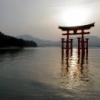
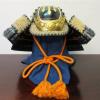


.thumb.jpg.77d8b8ceaccc15be659eed179b42bff3.jpg)

